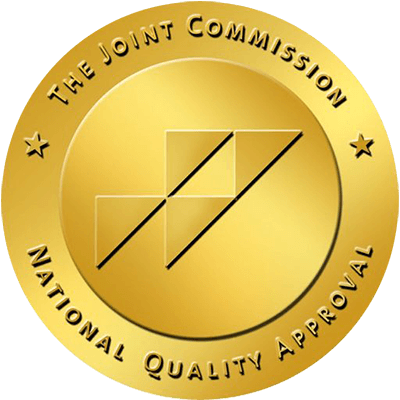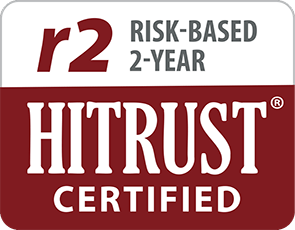Written by Shannon,
Brightside Health
9 Minute Read

Medically reviewed by:
Jen Miller, PMHNP-BC
PMHNP Director
10 Minute Read

It’s important to note that there is no test for diagnosing depression. There is, however, a depression screener that considers your risk for depression. The only way to receive a diagnosis is to talk to a provider.
Did you know that there is a quick depression questionnaire that can help you learn if treatment is a good idea?
Although feeling a little bit down every now and then is a common part of everyday life, feelings of hopelessness and despair that seem inescapable may be a sign that you are struggling with depression.
Depression is more than just occasional sadness or sadness that happens in response to the obstacles of life—depression can actually change the way you think, feel, and function, and it can greatly impact your ability to complete, and enjoy, daily activities.
Depression can also interrupt your life when it comes to work, school, eating, and sleeping habits. It may also affect relationships with friends, family, and loved ones, and day-to-day tasks can begin to feel very overwhelming.
However, depression is a treatable mental health condition and there are ways to get help. Starting with a depression assessment is a great first step.
The next step towards feeling better is learning more about both the causes and symptoms of depression so that you can better understand what is happening, and when it’s time to seek professional help.
Click here to take our free assessment now.
Different Types of Depression: What You Should Know
Before talking about some of the most common symptoms of depression, it may be helpful to review the different types of depression and what they can entail:
- Major depressive disorder is also known as major depression or clinical depression. It entails intense feelings that last for more than two weeks and that interfere with daily life.
- Bipolar disorder is characterized by alternating periods of low moods followed by periods of very high energy, known as manic periods. The low periods often leave patients feeling sad, hopeless, or lacking energy.
- Perinatal and postpartum depression are both related to childbirth, with perinatal being depression that occurs around birth and postpartum depression being that which occurs following birth. Perinatal and postpartum depression are often referred to as one and the same and can occur in the months leading up to, as well as the year after, childbirth.
- Persistent depressive disorder is also known as dysthymia, and the symptoms of this disorder are generally less severe than those of major depressive disorder but are experienced for two years or longer.
- Premenstrual dysphoric disorder is a severe form of premenstrual syndrome, and it thus impacts women in the days or weeks that precede the start of their menstrual cycle.
- Psychotic features can refer to delusions or hallucinations. Delusions are beliefs in things that are not based in reality, and hallucinations entail seeing, hearing, or feeling things that are not really there.This is classified as part of another condition, but is not a diagnosable disorder on its own.
- Seasonal pattern refers to symptoms that usually start in the late fall or early winter and subside in the spring and summer. This is classified as part of another condition, but is not a diagnosable disorder on its own.
Having a more complete understanding of these different forms of depression may help you better identify which disorder you may be dealing with. If you know you are struggling with depression, think you might be experiencing symptoms, or if an online depression evaluation like ours suggests you may be, you should consult your provider to talk about seeking help for depression.
Common Symptoms of Depression
Depression can cause a range of symptoms that a depression quiz can help unpack. Depression symptoms can vary from mild to severe depending on each person’s individual situation.The good news is that these symptoms are treatable.
Symptoms of depression can include:
- Feeling sad or being in a sad mood that does not go away
-
- Experiencing a loss of interest or pleasure in activities you once enjoyed
- Experiencing changes in your appetite such as an increased appetite or loss of appetite, and associated weight loss or weight gain
- Having difficulty sleeping or sleeping too much
- Experiencing fatigue and a loss of energy
- Performing more purposeless physical activity than before, such as leg bouncing, pacing, handwringing, or an inability to sit still
- Having slowed movements or speech
- Feeling worthless or guilty
- Having a hard time thinking, concentrating, or making decisions
- Having thoughts of death or suicide
Generally, symptoms of depression need to last for at least two weeks in order for a diagnosis to be made, and they must interfere with your ability to go about your life.
How to Take a Depression Screening Test
A reliable step towards determining whether you have depression is to take a free depression screening test, which can often be found online.
However, not all online depression screening tests are created equal. Be sure to take a depression screening test offered by mental health professionals, such as the test provided in Brightside Health’s free mental health assessment.
Other organizations such as the Anxiety and Depression Association of America (ADAA) and the United States Preventive Services Task Force (USPSTF) also offer reputable anxiety tests, depression surveys, and other self-assessments you can easily access online.
Depression tests and anxiety assessments found online should not be used in place of a formal evaluation by a healthcare professional. Rather, they can help you determine whether you should seek professional help.
No matter what you need, Brightside will be with you every step of the way, from your initial depression assessment or anxiety quiz to implementing your treatment plan. With Brightside, medication can be delivered to your door in most states, and you have unlimited access to evidence-based therapy, science-backed approaches, and expert psychiatric providers and therapists.
Here at Brightside, we work hard to bring you the depression care you deserve, right from the comfort of your own home.
What Is a Depression Screening Test?
A depression screening test is a questionnaire that helps check for the symptoms of depression. Unlike other medical tests that measure empirical data such as your blood pressure or your hormone levels, a depression test (like an anxiety survey) uses subjective questions to determine whether you are at risk for depression.
One of the most common depression tests is the Patient Health Questionnaire-9 (PHQ-9). The PHQ-9 is a list of 9 questions about symptoms such as your energy levels, your appetite, loss of interest in favorite activities, trouble concentrating, and other common symptoms of depression.
Instead of giving binary “yes” or “no” responses, the responder will assign a frequency to each question ranging from “not at all” to “nearly every day.”
What Do My Results Mean?
Depression cannot be diagnosed from a screening test alone. This is especially important to keep in mind if you are performing a self-assessment online. These results are a guide for future action, and you cannot diagnose yourself with depression.
The ADAA-recommended course of action is to take your depression screening test results to a healthcare professional to discuss them.
Your results and the answers you provide can be used by healthcare professionals to better describe your current mindset and anticipate your needs.
If your depression test responses indicate that you may be experiencing the symptoms of depression, you will likely receive a recommendation for additional evaluation that can lead to a diagnosis of depression.
Who Should Take a Depression Screening Test?
The USPSTF recommends that all adults regularly screen for depression. Depression is an extremely common condition, with over 8 percent of adults in the U.S. experiencing at least one major depressive episode.
While you may notice that you’ve had changes in your appetite or persistent feelings of sadness, many people are unaware that these symptoms could be signs of depression. Regular depression screening tests (much like anxiety evaluations) can help you stay proactive in your mental health and address issues you may not have realized are affecting your daily life.
People who have recently been diagnosed with health conditions like cancer or heart disease should also screen for depression, as many patients with other health conditions concurrently experience major depressive disorder (MDD) or some other form of depression.
Even if the screening does not indicate that you may be experiencing the symptoms of depression, it’s beneficial to see a professional if you would like support for your mental health.
How Depression is Treated
There are several different approaches to treatment for depression, and a combination of approaches may be most effective in some cases.
Depression is commonly managed through the use of antidepressant medications, such as selective serotonin reuptake inhibitors (SSRIs) or in some cases, serotonin norepinephrine reuptake inhibitors (SNRIs).
At Brightside Health, our psychiatric providers find the right medication for you—analyzing 100+ data points to determine which treatment is likely to be most tolerable and effective.
Once you start taking medication, you should carefully follow your provider’s instructions as well as any instructions on the drug label, and avoid taking too much or too little of your medication at one time.
Psychotherapy, such as the clinically-proven cognitive behavioral therapy, is another treatment for depression, and it involves working together with a licensed therapist to overcome any challenges you’re facing. You can learn skills to help decrease these symptoms and develop coping strategies that help you feel better. Treatment that includes both targeted medication and therapy can lead to a better chance of recovery.
The Bottom Line
Feeling sad or down every once in a while is a fairly normal part of everyday life, but if your sad feelings leave you feeling hopeless or in despair and they do not go away, you may be experiencing depression.
There are many different forms of depression, including major depressive disorder, seasonal affective disorder, and bipolar disorder. A licensed mental health professional like the ones at Brightside Health can help with a diagnosis and personalized treatment plan.
Symptoms of depression can include changes in your appetite, changes in your eating or sleeping habits, slowed movements and speech, fatigue and loss of energy, and a loss of interest and pleasure in activities that you used to love. The symptoms of depression can vary and range from mild to severe, and they may differ from person to person.
Take Brightside Health’s free online assessment, which includes a clinical depression test, an anxiety assessment, and more, to get started with your personalized treatment plan.
Want to speak 1:1 with an expert about your anxiety & depression?
Sources:
Depression Symptoms and Warning Signs | Help Guide
Depression: Types, Symptoms, Causes & Treatment | Cleveland Clinic
What Is Depression? | Psychiatry
Depression (major depressive disorder) – Diagnosis and treatment | Mayo Clinic




















